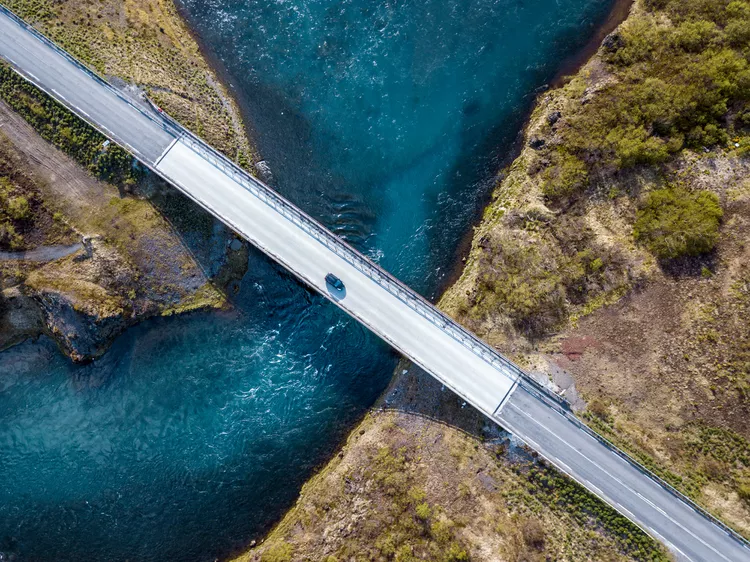Summary
Driving in any unfamiliar area can be intimidating; however, Iceland’s unpredictable weather and rugged terrain should not deter you. Renting a car in Iceland offers unparalleled freedom to explore. While Reykjavik is a fantastic destination for a long weekend, the true Icelandic experience lies beyond the urban landscape. Prepare to be rewarded with breathtaking views of lava fields, countless waterfalls, and mesmerizing black sand beaches. The best part? Traffic is minimal; you can drive for hours without encountering another vehicle.
Driving Requirements
To rent a car in Iceland, you must be at least 21 years old. If you wish to rent an off-road Jeep, the minimum age is 25. Ensure you have your driver’s license, vehicle registration, passport, and proof of insurance ready in case of any issues.
Rules of the Road
Driving in Iceland resembles driving in a quaint town in the United States, despite the starkly different scenery. Speeds are measured in kilometers per hour, which can initially be confusing if you’re used to miles. Road signs are fewer, primarily clustered around cities, but locals often denote locations by mile markers.
Roundabouts are prevalent, especially in Reykjavik. These can be quite large; therefore, be mindful of the lanes. Outside the cities, you will encounter small bridges over various water bodies, from streams to rushing rivers. Most bridges accommodate one car at a time; thus, the first car to arrive has the right of way. The driver at the opposite end will pull off slightly to allow for crossing. This process requires patience. Longer bridges feature designated pull-off points, as visibility may be compromised on the other side. Remember, Icelanders are friendly, so don’t hesitate to wave as you pass.
The speed limits are simple: 31 mph (50 kph) in towns, 49 mph (80 kph) on gravel roads, and 55 mph (90 kph) on paved roads.
Weather and Road Conditions
Iceland’s weather is notoriously unpredictable due to its location in the Atlantic Ocean, near the Arctic Circle. Storms can develop rapidly. If you plan on visiting and driving, make sure to bookmark the local weather resource, Vedur, which provides accurate and timely updates. In winter, it’s common for roads to be closed, and driving in the Central Highlands is advisable only via a tour with operators equipped with Superjeeps.
During summer, while snow is less of a concern, wind can be intense. It’s often better to wait it out rather than push through adverse conditions.
Keep an eye out for potholes; the intense winter can leave roads in disrepair. The Ring Road, Iceland’s main coastal route, is usually paved and easy to navigate. However, side roads leading to national parks, classified as F roads or mountain roads, are unpaved and can vary in quality.
Should You Rent a Car?
If you plan to stay in Iceland for more than a long weekend, renting a car is advisable. While tour buses provide routes across the country, you’ll often find yourself in cramped quarters. Enjoying Iceland’s stunning landscapes is best done at your own pace, pulling off to take in the natural beauty.
Moreover, when renting a car in Iceland, consider comprehensive insurance coverage. The unpredictable weather presents unique driving challenges. In summer, high winds can whip up sand and rocks, potentially damaging the vehicle. In winter, road conditions can be hazardous due to ice and snow.
Parking
In larger cities, there is ample street parking, both paid and free. However, do not expect to find parking garages commonly. When driving in the countryside, it’s acceptable to pull off the road to admire the views, but ensure your vehicle is entirely off the road to avoid damaging natural vegetation. Respect private property, as you would want others to show respect for your space.
Road and Travel Safety
As previously stated, weather conditions can become unpredictable in Iceland. Never hesitate to pull over if you’re feeling uneasy; it’s safer than risking your well-being.
Seat belts are mandatory, and driving with headlights on is required, even during the day. Using a cell phone while driving is illegal, so either switch it off or hand it to a passenger. Off-roading is not only illegal but also poses risks to Iceland’s fragile environment.
Driving under the influence is treated seriously; there is a strict alcohol limit enforced. A first offense can lead to hefty fines and a two-month license suspension.
Familiarize yourself with two critical phone numbers in Iceland: dialing 112 will connect you with police, ambulances, and fire services nationwide. If you’re in Reykjavik, you can reach a doctor by calling 1770.
By adhering to marked roads, avoiding distractions, respecting speed limits, wearing seat belts, and using headlights, you’re well-prepared for a safe journey.





